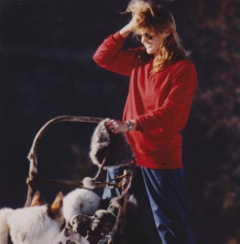 Shelley Gill – 1978 Iditarod Dog Musher, Alaskan Author, and Whale Detective
Shelley Gill – 1978 Iditarod Dog Musher, Alaskan Author, and Whale Detective
By Joanne Potts, Assistant to the Race Director, and Shelley Gill
Shelley Gill is best known as the writer of 30 best selling children’s books, including Kiana’s Iditarod. But Shelley was also the fifth woman and 104th musher to complete the Iditarod Trail Sled Dog Race® in 1978.
Born in Albuquerque, New Mexico and raised in South Florida, Shelley says she knew early in life she didn’t want to spend her days on a Florida beach working on her tan. She wanted adventure, so at the age of 16, she left Florida and began a trek across country looking for “an authentic” life. Working at rock concerts and political demonstrations as a “glorified first aid practitioner” she moved through “all the hippy towns-Boulder, Greenwich Village, The Haight.” Her new book, Gabe-Me, My dog and the 1970’s”, follows that fitful trip by Shelley and the dog she had always longed for as a child.
 “I snagged Gabe at the First Gathering of the Rainbow People after Woodstock. He was left in the medical tent in Granby, Colorado. I was 17 by then and he died when I was 34, so we grew up together. We survived the 70’s and finally made it to Alaska.” Gabe has been nominated for The Grateful American Book Award, which will be announced in October at The Library of Congress.
“I snagged Gabe at the First Gathering of the Rainbow People after Woodstock. He was left in the medical tent in Granby, Colorado. I was 17 by then and he died when I was 34, so we grew up together. We survived the 70’s and finally made it to Alaska.” Gabe has been nominated for The Grateful American Book Award, which will be announced in October at The Library of Congress.
Shelley spent some time in New Orleans working at a free clinic and a coffeehouse where she first met Alaska’s Hobo Jim, who wasn’t Hobo Jim yet. At the time, she did not imagine they would both end up in Alaska and become dear friends. They have collaborated on several projects including ‘Danger the Dog Yard Cat‘ with Iditarod Champion Libby Riddles and ‘Thunderfeet-Alaska’s Dinosaurs’.
Arriving in Fairbanks in 1973 driving a VW bus, Shelley worked as a stonemason in Anchorage. Her first experience with dogs was using a team to take slate out of the mountains near Hope. It was while working in Hope that she met Shannon Cartwright who later became the illustrator for many of Shelley’s children’s books.
Shelley trained horses for Keith Specking, then the assistant to Governor Jay Hammond, in the summers at his hunting camp on Brushkana Creek near Denali. Shelley became serious about mushing after she met Norman Vaughan while they both were attending classes at UAA.
Shelley and husband Mitch even lived in Anchorage with a pack of huskies in their downtown backyard for a few years. She laughs about taking her team out early in the mornings on the trails down through Mulcahy Park, across Westchester Lagoon, and over the bike bridge to Tudor track. She decided to enter the 1978 Iditarod Trail Race, along with two other women, a rookie named Susan Butcher and Varona Thompson, who had completed the Iditarod in 1977. “It seemed like a great deal. How else would you cover that distance logistically for such a small amount of money.” Another incentive: she knew by then that she wanted to be a writer and she wanted to write about the Iditarod.
Shelley ended up that winter at Joe Redington’s place looking for advice. The first thing Joe asked her was, “Do you have any experience?” She replied that of course she did, which was a big fat lie. She knew nothing, zero, about racing.
Dorothy Page quickly dubbed the trio Brains, Braun and Beauty. “I was Brains,” Shelley quips. “I never ran another race!”
The three women camped out Goose Bay Road on the seismic trails with Dick Mackey and Joe Sr.. There were dogs everywhere. In town at the Kashim Inn, the word was “the girls” would never make it to Nome. They were described as “one stick ahead of the fire”; a cruel insult back in the day. Then one bitter morning a super cub landed a little way down the dog trail and Cathy Mackey (now Cathy Smith) hopped out, grabbed her chain saw, and immediately began bucking up wood. She wanted to help.
By late November, Shelley knew she didn’t have enough or the right dogs to run the race. She drove up to Manley (not realizing the road was closed) and got two dogs from Joee and Pam Redington, another from Rick Swenson, and a leader named Kai from Bill Cotter. Kai “was the only brains on the team.”
“I had to build a fire under my truck to get it running again but I drove back out of there, gunning it up the glaciers and sliding down to gravel.” Later came another leader, Tiger, from Raymie Redington.
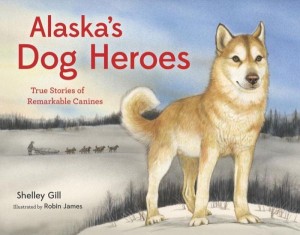 After a shaky race beginning when her gang line disintegrated at the Big Lake starting line, (Cathy Smith again flew her plane to the rescue with a new gang line) and a bout of food poisoning at Finger Lake, the race moved up the trail toward Nome.
After a shaky race beginning when her gang line disintegrated at the Big Lake starting line, (Cathy Smith again flew her plane to the rescue with a new gang line) and a bout of food poisoning at Finger Lake, the race moved up the trail toward Nome.
“There were times we were fighting our way through deadfall with saws and axes. There was no snow in The Burn. I wore sneakers all the way to Nikolai then it got cold. We followed a trail, we just didn’t know if it was the Iditarod Trail or not.”
Shelley remembers best the people she met and the wealth of knowledge they had about Alaska. “I was a kid from Florida and I met Billy McCarty at Ruby, Edgar Nollner at Galena, and Edgar Kalland in Kaltag-they drove dogs on the original serum run! How cool is that?”
Her fondest memories are of the kindness of the people along the way. “I remember when I got to White Mountain, Mrs. Lincoln met me on the river and took me home where she fed me caribou stew and insisted I sleep in her bed. She asked me if I was scared. I remember thinking to myself I’m too dumb to be.” Of course that was in the days before the corralling rule was put into effect.
In Unalakleet, Tim Towarak met her as she drove into town. It was the middle of the night and he was there, “standing out in the cold shivering and waiting for me! He took me home, fed me and I even had a hot bath at his house.”
Kathy Saccheus of Elim drove her snowmachine into a storm to get me on the right trail over Little McKinley to Golovin and when I reached Nome the St. Lawrence Islanders gave me one of the only two ivory carvings I have ever owned. Longtime Nome resident Carla Lang (Lightening Ray Lang’s wife) gave me another one. I was really touched by how loving everyone was.”
Approaching Nome, Shelley traveled miles out of her way- almost to Council- on a well marked but wrong trail. “I finally realized there were no tripods, just blue survey tape, no dropped booties or anything so I put on the brakes. Again. Turned out I was on the old Alaska Sweepstakes trail. So I turned around and went back the way I had come.” Of course at the Solomon Slough the wind was screaming but Shelley eventually made it to Nome in 29th position in 19 days, 15 hours, 7 minutes and 8 seconds after a foot race up Front Street against musher John Wood.
In 1979, Joe Redington, Sr. invited Shelley to join him and Susan Butcher, Ray Genet, Rob Stapleton, and Brian Okonek as they attempted the first dog team assent of Denali. But she had other things going on. “I have regretted that decision all my life,” she says now.
Shelley worked for the Frontiersman, a Mat-Su newspaper, from 1981 to 1989, where she started as a reporter, became an editor, and finally, the publisher. She wanted to run the 75th commemoration of the All Alaska Sweepstakes Race in 1983 but was publisher of the Frontiersman at the time and working 80 hours a week. Another regret.
She started writing children’s books in 1983 and still cranks out one or two a year. “I have one simple goal. I want to produce something kids can relate to, a story that knocks their socks off, that fills them with that WOW! feeling. I want kids to say: “THIS is my FAVORITE book!” Her stories run the gambit from adventure to the science of salmon.
”I kept waiting for someone to write a tall tale about Alaska and when nobody did I wrote Sitka Rose.” Published in 2005 it is the story of a girl with flaming red braids, who created the tides, brought the salmon from the sea and with her moldy toes mushed a team of wolverines across Alaska.
When Shelley moved to Homer in 1989 where her daughter, Kye, was born, she took over as publisher of the Homer News. Shelley named Kye after Cotter’s old lead dog, Kai, who tells the story of the Iditarod through a dog’s eyes in Kiana’s Iditarod. Over the past 35 years Shelley has traveled the world visiting 4,900 schools and talking to over 2,000,000 students about Alaska, the Iditarod, whales, and recently climate change. This fall she keynotes the Pennsylvania Reading Literacy Changes Lives Conference and is working on her own u-tube channel featuring her Alaska science educational materials.
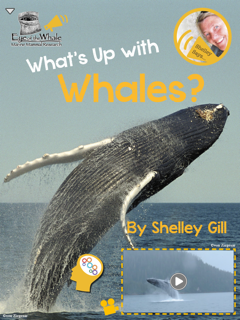 Shelley says that her big passion for the last 16 years has been working in Prince William Sound with Eye of the Whale Marine Mammal Research, (EOW), a small nonprofit research and education group, based in Homer, Alaska. Biologists have been studying humpback whales in Prince William Sound (PWS), Alaska since 1983, creating a long-term census determining population numbers, distribution, feeding habits, and associations between whales. Shelley explained that they have “learned from disasters like the Exxon Valdez Oil Spill that having baseline information on a species is vital. Luckily EOW was counting the whales and photographing their unique tails years before the oil swept through our study area. Now, 33 years later, humpback whales are thriving and we have been able to monitor their population growth, and social habits.”
Shelley says that her big passion for the last 16 years has been working in Prince William Sound with Eye of the Whale Marine Mammal Research, (EOW), a small nonprofit research and education group, based in Homer, Alaska. Biologists have been studying humpback whales in Prince William Sound (PWS), Alaska since 1983, creating a long-term census determining population numbers, distribution, feeding habits, and associations between whales. Shelley explained that they have “learned from disasters like the Exxon Valdez Oil Spill that having baseline information on a species is vital. Luckily EOW was counting the whales and photographing their unique tails years before the oil swept through our study area. Now, 33 years later, humpback whales are thriving and we have been able to monitor their population growth, and social habits.”
She has recently written a new innovative APP, What’s Up with Whales?, that gives students a chance to experience the whale’s world and explore the latest science on different species of cetaceans. It is crammed full of bells and whistles and both multi leveled and bilingual and it is only available on the Apple I-pad.
Currently Shelley is hard at work with others who are trying to stop the Navy’s huge war games (Northern Edge) in the Gulf of Alaska, scheduled right in the middle of the salmon and whale migration. EOW is asking the Navy to conduct their exercises in the late fall, winter or early spring as they have in the past when there would be less chance of harming or killing marine mammals and fish. “It just makes no sense to blow up huge bombs, pollute critical fish habitat and risk the lives of whales and the livelihood of Alaskans just because the Navy wants to train when the weather is warmer. They need to man up.”
Asked if she ever considered running the Iditarod again, Shelley laughed. “It is a whole different race now. I’d like to ride one of Jeff’s (King) sleds with the seat and trailer for sure. But it has gotten pretty high tech and way too fast for the likes of me. I’m like one of those Galapagos tortoises. I’m not really built for speed but I never give up and I’m planning on living forever.”
See all of Shelley’s books on her website, www.shelleygill.com and visit Eye of the Whale Research on Facebook or at www.eyeofthewhaleresearch.org
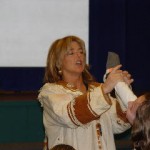 View Shelley Gill on Youtube at this link.
View Shelley Gill on Youtube at this link.
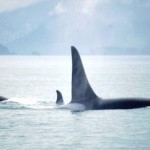 View this whale video from Shelley.
View this whale video from Shelley.

































